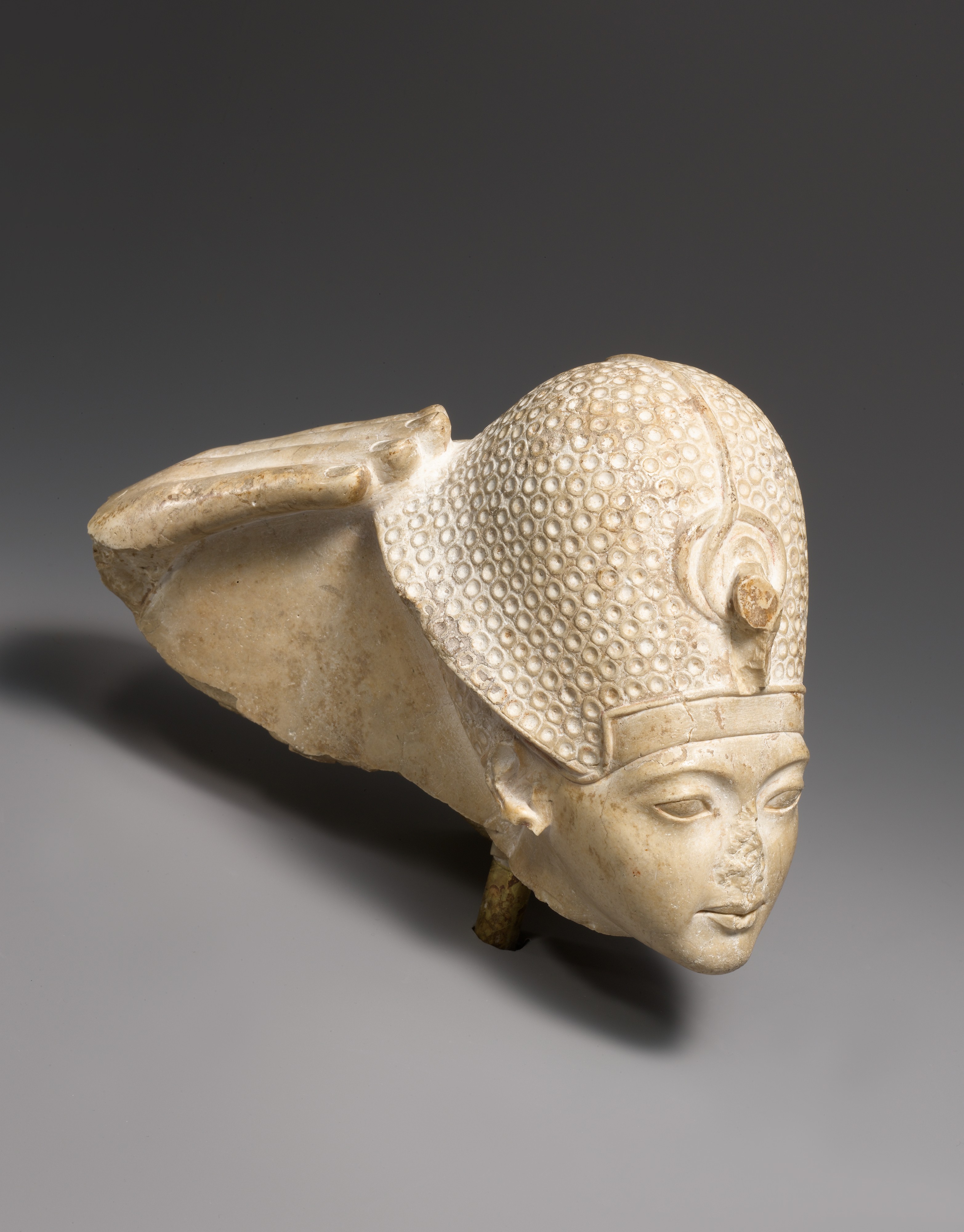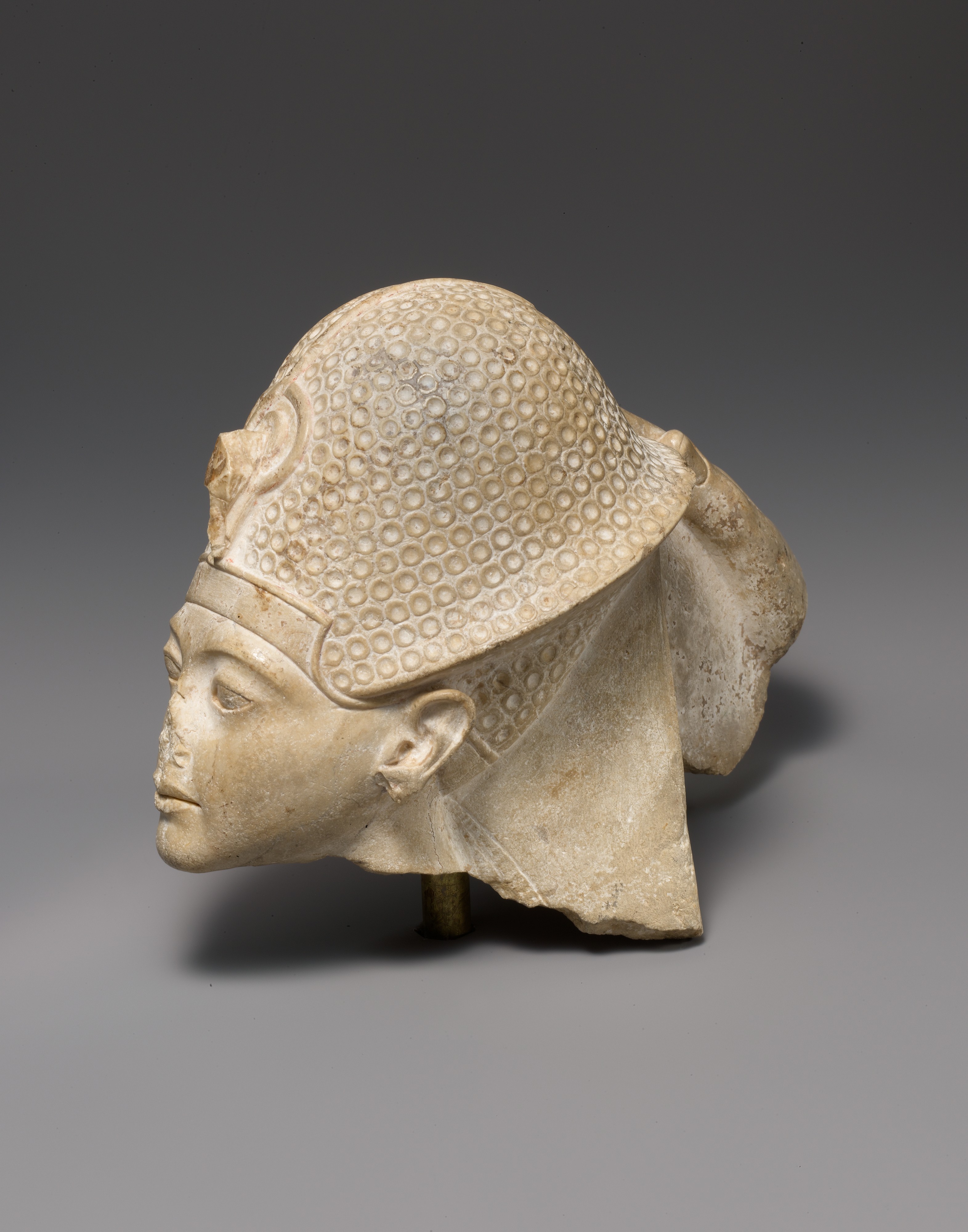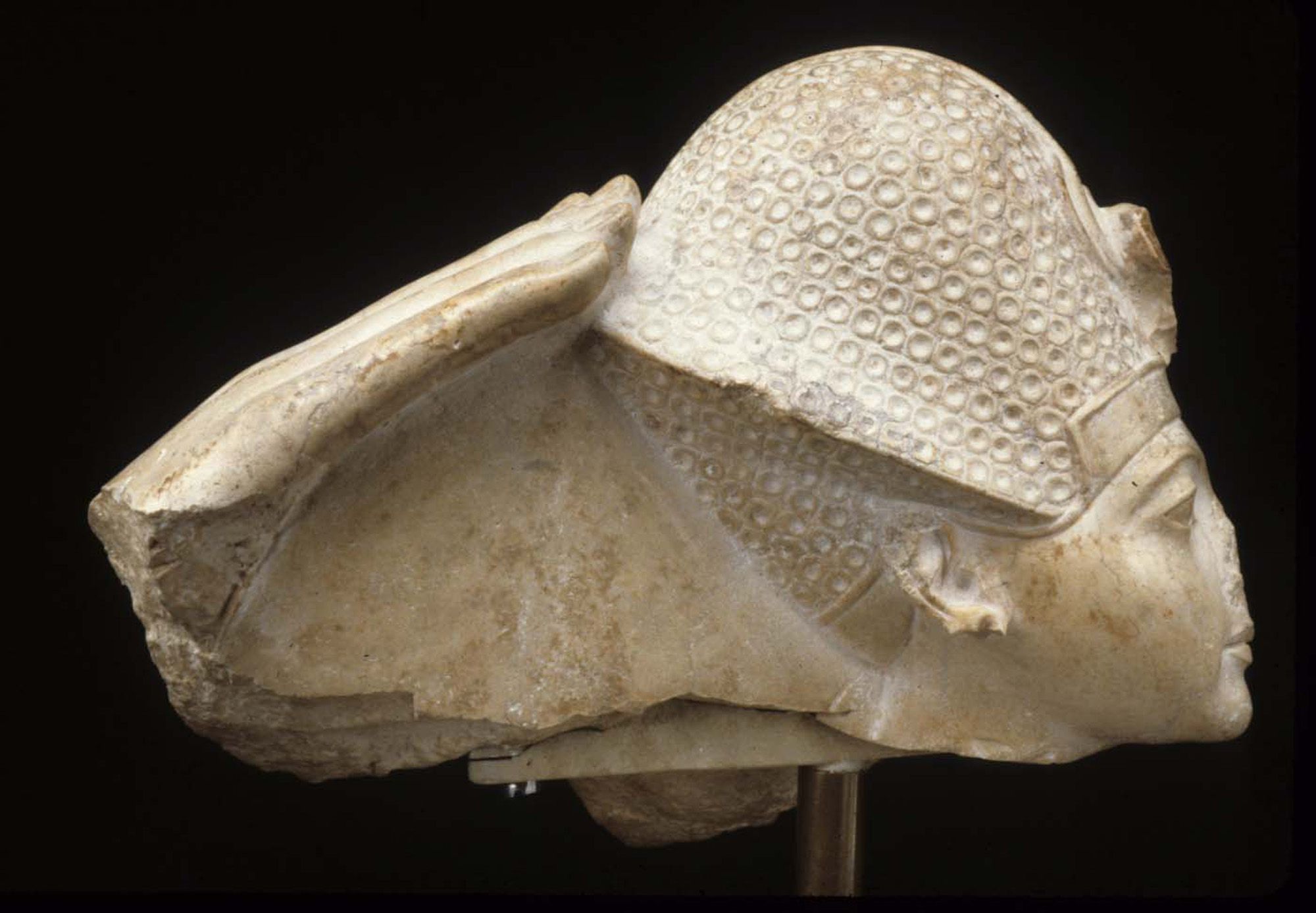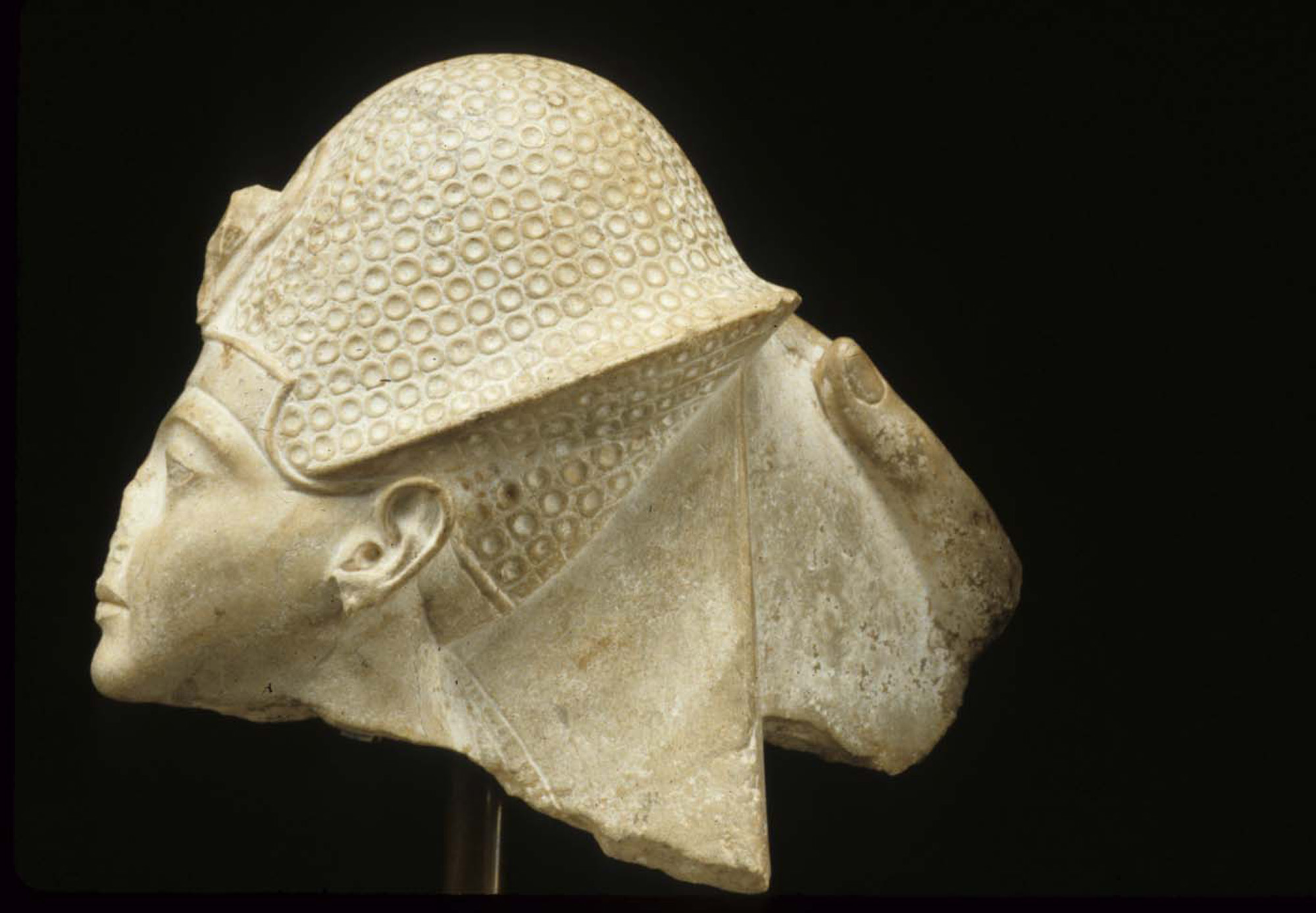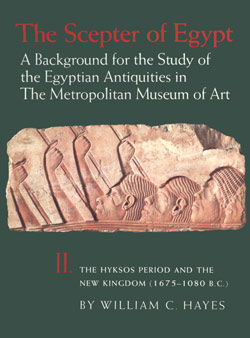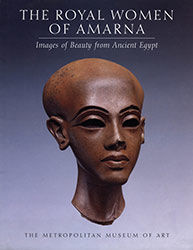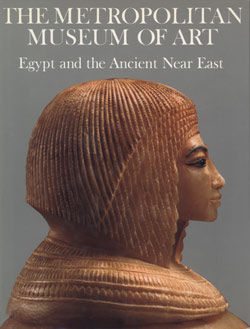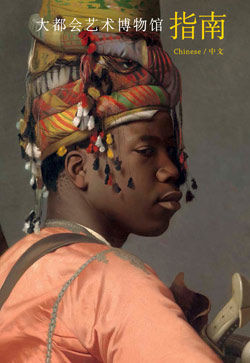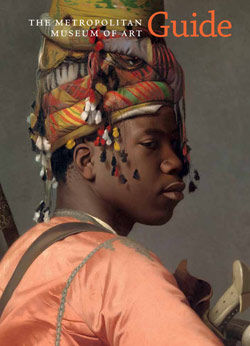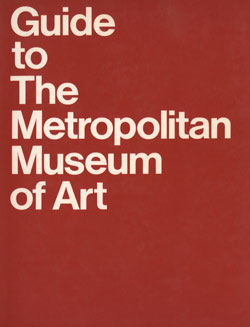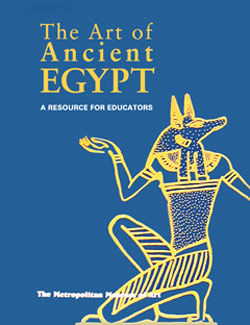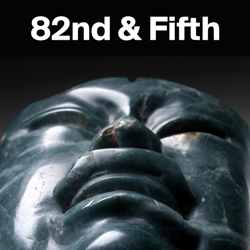Head of Tutankhamun
New Kingdom, Amarna Period
This head is a fragment from a statue group that represented a god seated on a throne with the young king Tutankhamun in front of him. The king's figure was considerably smaller than that of the god, indicating his subordinate status in the presence of the deity. All that remains of the god is his right hand, which touches the back of the king's crown in a gesture that signifies Tutankhamun's investiture as king. During coronation rituals, various types of crowns were put on the king's head. The type represented here—probably a leather helmet with metal disks sewn onto it—was generally painted blue, and is commonly called the "blue crown." The ancient name was khepresh.
Statue groups showing a king together with gods had been created since the Old Kingdom, and formal groups relating to the pharaoh's coronation were dedicated at Karnak by Hatshepsut and other rulers of Dynasty 18. The Metropolitan's head of Tutankhamun with the hand of the god is special because of the intimacy with which the subject is treated. The face of the king expresses a touching youthful earnestness, and the hand of the god is raised toward his crown with gentle care.
A cast of the head has recently been matched by a scholar to the remains of an indurated limestone seated statue of a god in the storerooms at Karnak in Thebes. She reports that the join is minimal, but conclusive. This confirms the long supposed origin of the Museum's head from Karnak temple, and also resolves the question of the young king's pose - he was standing rather than kneeling in front of the god. The seated god at Karnak is only preserved from the waist down and is much damaged, but he is identified as Amun by the distinctive epithet "ruler of Thebes" included in the inscription.
#3460. Head of Tutankhamun
Due to rights restrictions, this image cannot be enlarged, viewed at full screen, or downloaded.
This artwork is meant to be viewed from right to left. Scroll left to view more.


